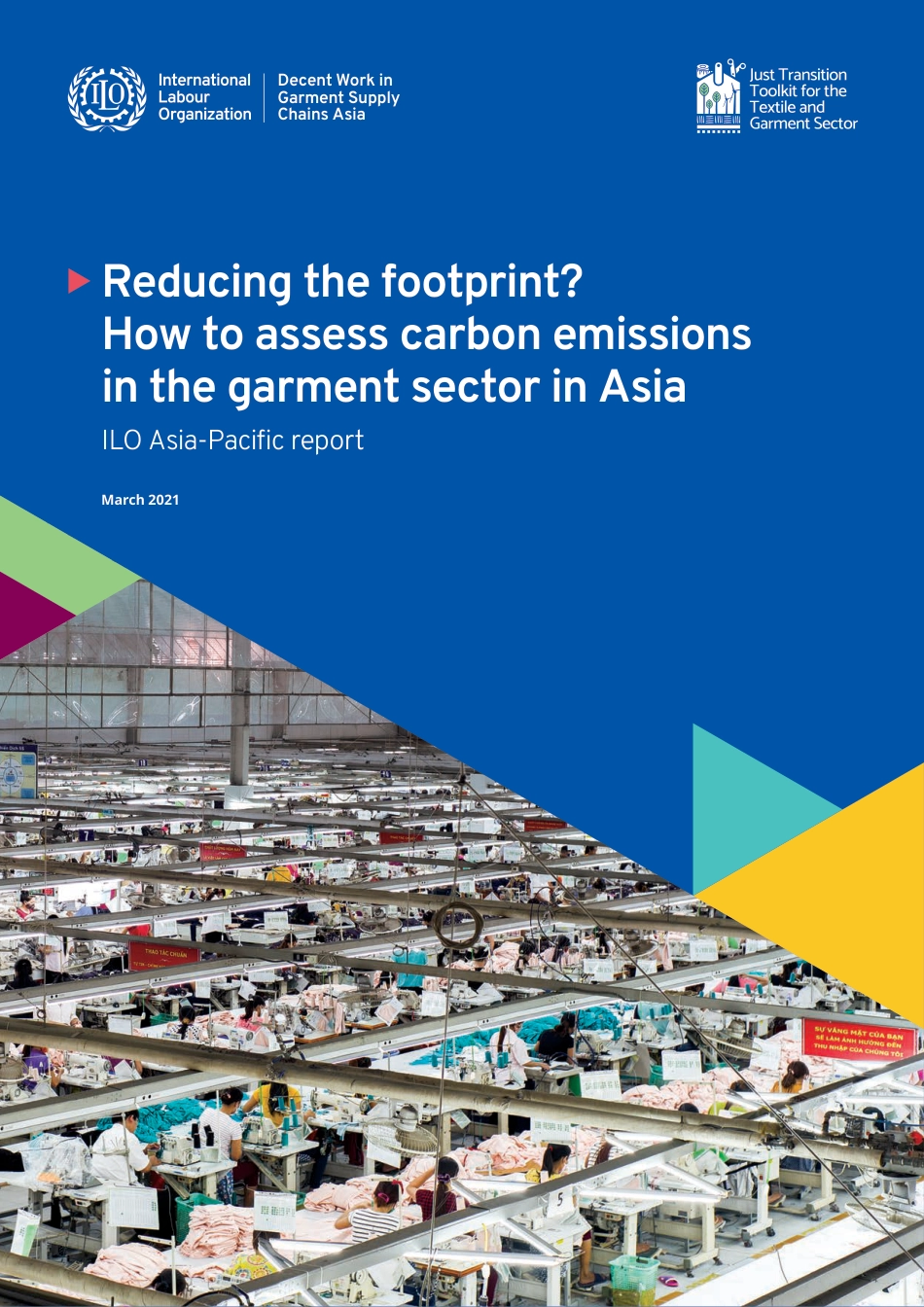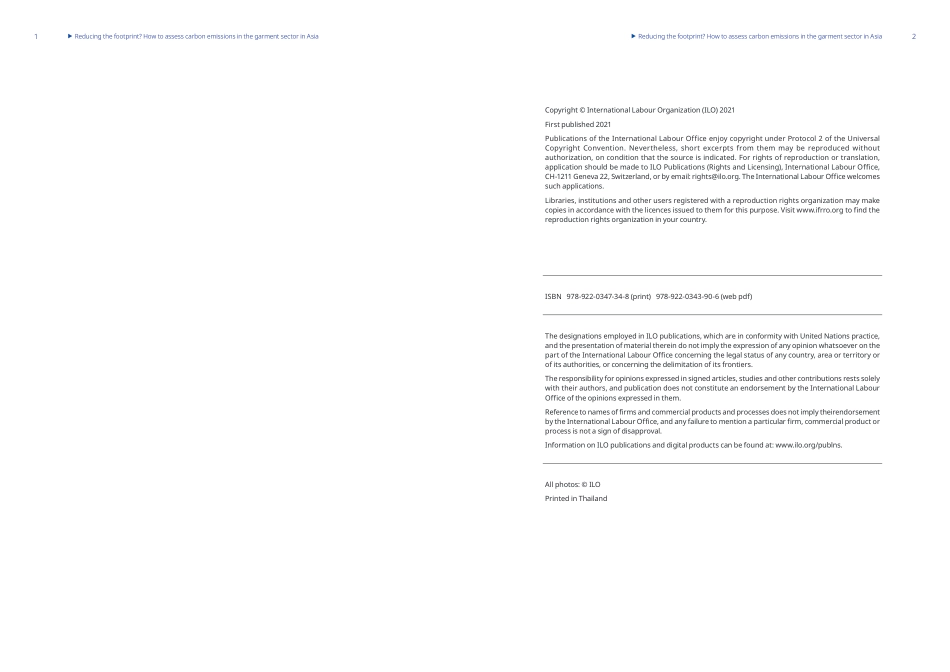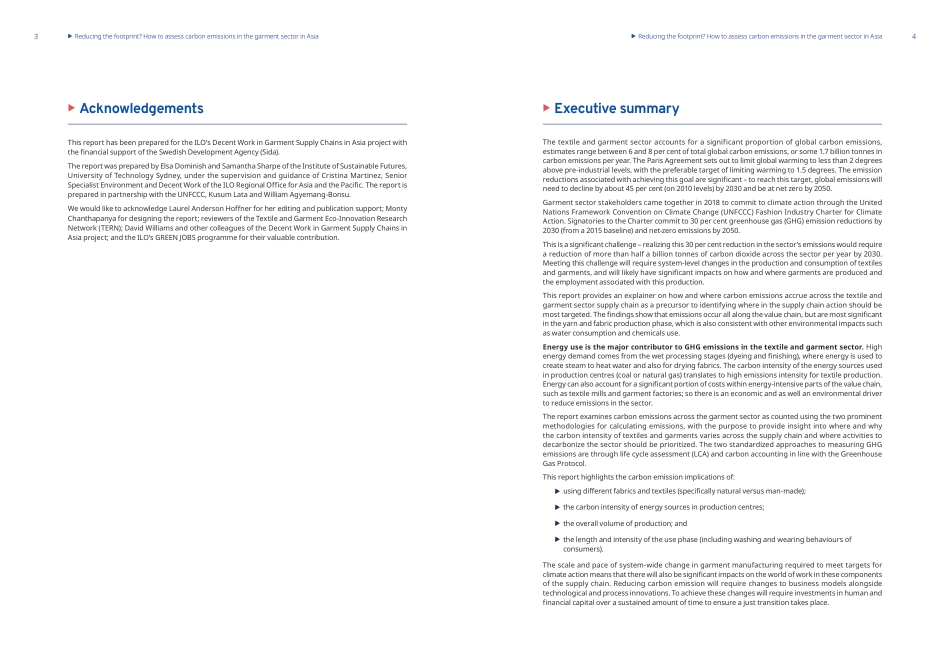X Reducing the footprint? How to assess carbon emissions in the garment sector in AsiaILO Asia-Pacific reportMarch 2021Decent Work in Garment Supply Chains Asia X Reducing the footprint? How to assess carbon emissions in the garment sector in Asia2 X Reducing the footprint? How to assess carbon emissions in the garment sector in Asia1Copyright © International Labour Organization (ILO) 2021First published 2021Publications of the International Labour Office enjoy copyright under Protocol 2 of the Universal Copyright Convention. Nevertheless, short excerpts from them may be reproduced without authorization, on condition that the source is indicated. For rights of reproduction or translation, application should be made to ILO Publications (Rights and Licensing), International Labour Office, CH-1211 Geneva 22, Switzerland, or by email: rights@ilo.org. The International Labour Office welcomes such applications.Libraries, institutions and other users registered with a reproduction rights organization may make copies in accordance with the licences issued to them for this purpose. Visit www.ifrro.org to find the reproduction rights organization in your country.ISBN 978-922-0347-34-8 (print) 978-922-0343-90-6 (web pdf)The designations employed in ILO publications, which are in conformity with United Nations practice, and the presentation of material therein do not imply the expression of any opinion whatsoever on the part of the International Labour Office concerning the legal status of any country, area or territory or of its authorities, or concerning the delimitation of its frontiers.The responsibility for opinions expressed in signed articles, studies and other contributions rests solely with their authors, and publication does...



